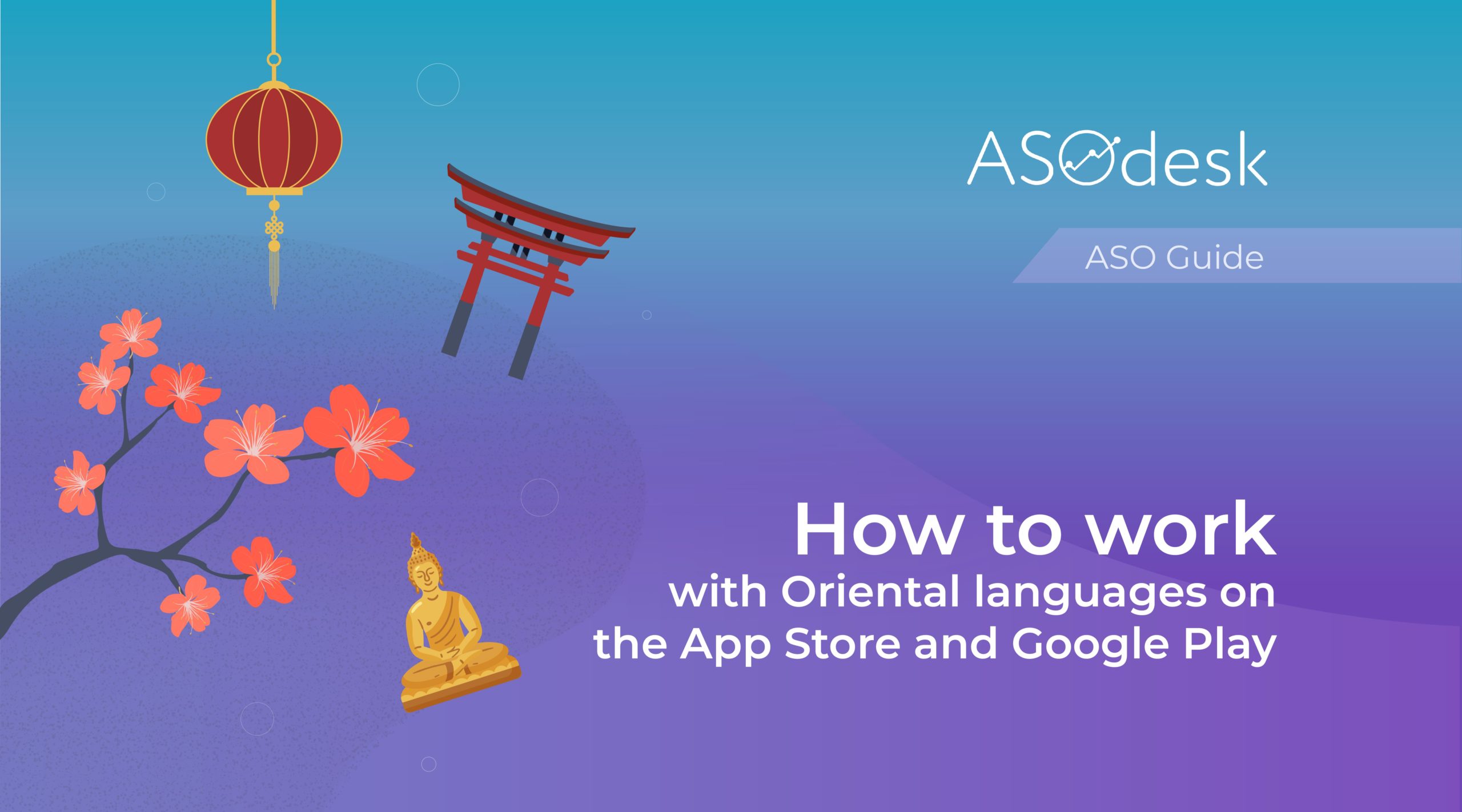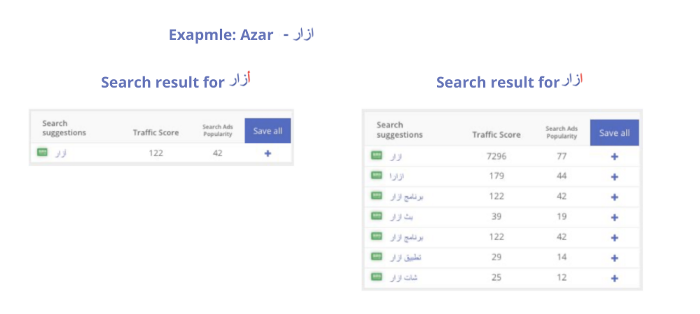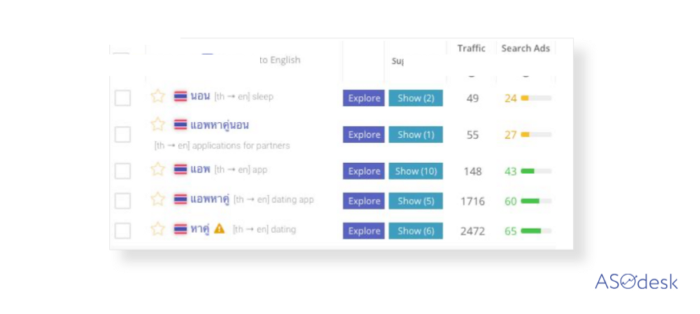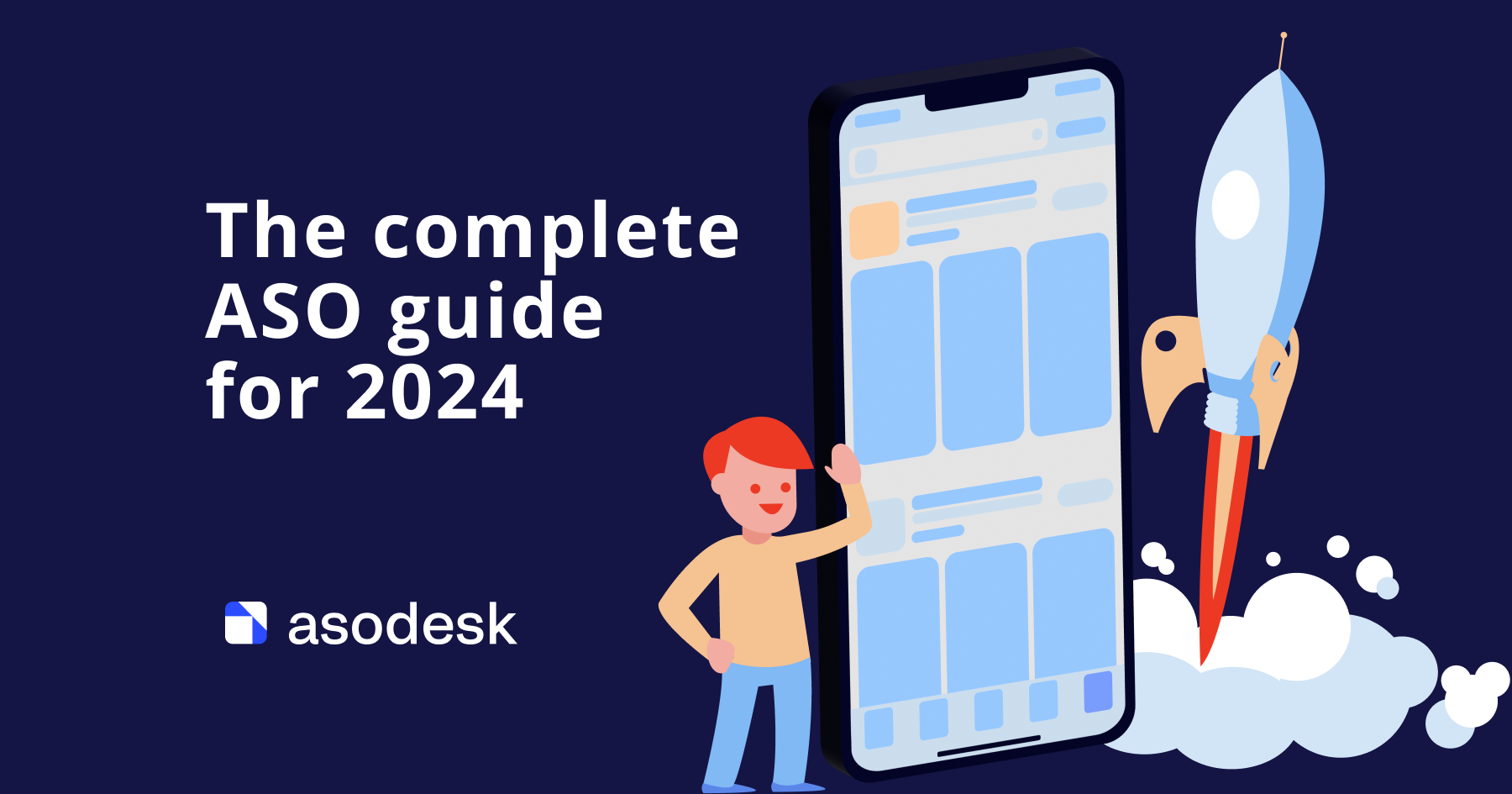How to work with Oriental languages on the App Store and Google Play

Greetings. My name is Nikita Lobanov, I’m an ASO Expert at ASOdesk. In this article, I will talk about the peculiarities of Keyword Research and compiling metadata in Oriental languages: Arabic, Japanese, and Thai.
In addition to basic Keyword Research, it is important to work with different word forms in various languages. The more relevant semantics of different kinds we gain, the more frequency keywords, the more space for manoeuvre we have. We will be able to reach more users and gain an advantage over competitors. Therefore, the more specific our words are in some localizations, especially oriental ones, the greater is the opportunity to find a loophole to get your traffic share on a new market.
This is a series of articles based on ASOdesk Academy lectures, where we touched on all aspects of optimization for applications. We have already told you how to get started with ASO, and how to run ASO on Google Play, explained what affects your positions on stores, and shared our ASO life hacks. You can watch the original lecture here:
This material is at the interface between ASO and linguistics. We will look at the peculiarities of Oriental languages and delve into a broad study of semantics. Let us consider three languages: Arabic, Japanese, and Thai. They’re all Oriental languages, but they differ.
Arabic
Articles
There is no indefinite article in Arabic. Its functions are performed by other content words. However, there is a definite article. It is a particle – [ˈæl] – ال, which is put before the word and spelled together with a word. All of us heard this prefix at school. The word “algebra” is an example of using this definite article. When doing semantics research, you must consider both versions of a particular keyword: with and without article. Otherwise, we lose traffic. Below, I give an example of how the word “sun” is spelled with and without an article.
Examples:
شمس— sun
الشمس— (it’s) the sun
Another example is the word “health.”

To the left the word is without the article, and its traffic is 3455 + brand queries. On the right, we see the use of the word with the article. Yes, there is less traffic score here, but the number of suggested search queries is larger. Often, the longer and larger the query and lower its frequency, the less competitive it is. That is, we can focus on the word “health” with the article but work with a huge number of additional words to promote the app using them.
If we do not consider one of these words in the search, we may lose additional traffic. The probability that taking a word with the article brings you higher is large because it is less competitive.
Vowel signs

Arabic has few vowels and most letters are consonants. The letters have a huge number of variations in their spelling. Vowel signs are superscript and subscript diacritic signs that are used to indicate short vowel sounds and other particularities of word pronunciation not displayed by letters (highlighted in red). They are not spelled but pronounced. Can be written in sacred texts, alphabet, literal, dictionaries for people who start learning the language. Usually, in written texts, they are only implied.

This is the brand name of the Azar app. In the search, we see examples with vowel signs. On the left, we see a query with a vowel sign and it gives just one example. On the right, we see queries without vowel signs. The vowel signs won’t bring much traffic, but it’s worth paying attention to them to find your loophole for getting higher positions.
Note that the Arabic language is read from right to left and at each of the three words given we see on the end something like the inverted P letter. There are two variants of writing this ending: with and without two dots. It is the designation of written and spoken language. Here we see a peculiar picture: a lot of semantics both for one spelling and for another.

Arabs like to transliterate words in a huge amount of variation. For example, the word “chat” has 3-4 spellings completely unlike each other. Most of it is transliteration, that needs to be considered. That is, when you do semantics research and use a built-in translator in the service, you will see a lot of different words the translation of which is the same. Don’t worry about it, especially if these are words like “chat” that is not an Arabic one. You can use all options, and depending on your positions, you can put one variation of the writing in the title, the second in the subtitle, and some more in the keywords. You will cover many options for spelling of your keyword and will be able to choose those showing better results.
Punctuation
Modern Arabic literary language uses European punctuation marks, but with some changes caused by a different direction of writing — from right to left. You can put signs from the European keyboard, they will adapt and will not prevent you from indexing the way you need to.
Arabic consists of letters. Technically, we work with it the same way we do with European languages. That is, you see a word, you filter the list of queries on it and you can safely add them divided by comma to the title, subtitle, keywords field, and so on. The main thing is to fixate word-forms.
Lifehacks
Let’s say we need to put some keywords in the title in an unfamiliar language so that they do not frighten the native speakers. You can use the translator in ASOdesk. It translates all nouns well. Note that nouns in Arabic phrases are always written first. So, the first word you see in the word combination in any query is most likely a noun. If we write “cheap tickets” in our language, then Arabs will write “tickets cheap.”
Examples of keys:
1) أكشن— action
2) ألعاب— game
If you need to link two nouns in the title, use the conjunction «و». So we can write “action and game”.
Technically Arabic is no different than European languages. There are words, gaps, conjunctions. If you work in Google Docs, you can write the name of your app to the left and put a colon. Everything will be displayed correctly on the app store.
Example title:
ألعابوأكشن: YourApp
To save time, you can also outsource the translation of the description, texts on screenshots. Professional translation can be done by Nitro. The service has more than 60 languages, including Oriental ones.
Sign up to Nitro using this link and there will be $25 on your balance. This is enough to translate 150-200 words into Japanese, Arabic, Thai, or other oriental languages.
Japanese
Types of Japanese writing
Unlike Arabic, things are a little more complicated in Japanese. This culture is even more distant from us. Because of the way Japan developed and its history, there are three writing systems: Kanji, Hiragana, and Katakana. All of these three systems come in place when researching keywords. You need to take this into account in order to correctly compile metadata.
Examples of spelling the pronoun “I” in three systems:
Kanji — 私
Hiragana — わたし
Katakana — ワタシ
Semantics research
Japanese do not widely use spaces, however, such queries occur quite often, allowing us to break one large key into several component parts, and this gives us the ability to expand the scope of keywords research.
The Japanese sometimes put space in queries. So if you see the space bar, boldly break the queries into parts.

In the screenshot, you see a big phrase. There are at least three words here, and we see all the derivatives of them, that is, several words at once. We see the frequency and can dig deep on each of the words. We also take queries on phrases where there are no spaces.
Metadata Compiling
The advantage of the Japanese is that it is concise, unlike Arabic or European languages. One character can mean a lot. 100 characters in the keyword field allow you to use many search queries. You can insert queries on all three types of writing, monitor, and evaluate promotion dynamics on those queries.
When drafting headings and subheadings, consider which specific version of writing you use to fill in these fields. Otherwise, it can negatively affect visual perception.
For the same reason, a comma should not be added to visible fields. It’s better to use a grammatically correctly composed full application name without spaces.
There are several hypotheses as to how Asian languages are indexed. My practice shows that a large phrase can be indexed as entire alone, while all queries composing it, if spelled out not through space, are likely to not be indexed. However, it is worth checking and testing this hypothesis on your application, cause the same mechanism does not always work the same way.
Adzsa Hatano of Phiture wrote in more detail on ASO in the Japanese market.
Thai language
Particularities of writing
Thai words are not separated by spaces in a sentence: whole phrases or sentences are usually written together.
An example of Thai writing:
ภาษาไทยทาใหคนรสกถงความเปนเจาของ
สอสารทดตอกน
A huge sentence is just a combination of a large number of hieroglyphs without spaces. It will be difficult to puzzle it out at once. On the other hand, it gives a kind of advantage too. Below, I’ll tell you why.
Keyword Research and indexing
The mechanics of semantics research in Thai is similar to Japanese, but in this case, I advise you to pay more attention to mid-frequency and low-frequency queries, which are physically larger.

The second phrase in the picture “applications for partners” is the largest key we have in this semantics. This query includes all the words listed above it and below. All words often consist of three signs. So you can try dividing words into three characters. We divide, get more keys, and start looking for semantics on all of them.
Particularities of writing
In both Asian and European languages, the word form is very important. We don’t insert a phrase with space, we put a comma. Things work differently in the Thai language.
We take the basic query from the previous screenshot, break it into three words, get three queries. But we use this key without spaces and add it to any header or indexed field, so we get the promotion on all three keywords. It is effective to use as many big phrases as possible. Naturally, they need to be checked for the presence of our target keys in them. But keep in mind that without using commas one sentence is indexed as a bunch of different words.
Basic query: แอพหาคนอน
Breakdown: แอพ_หาค_นอน
Final keys:
1. แอพ;
2. หาค;
3. นอน.
Example:
YourApp: แอพหาคนอน
Important: using the longest query will allow you to get indexing of all words included in the phrase separately.
Eastern localizations are very often easier for promotion than others. It’s much easier to promote the app in Saudi Arabia than it is in Canada or the US. Therefore, promoting your application in eastern countries is another opportunity to get traffic quickly. It would only take a few iterations and a little effort. The main thing is to research as much semantics as possible.










